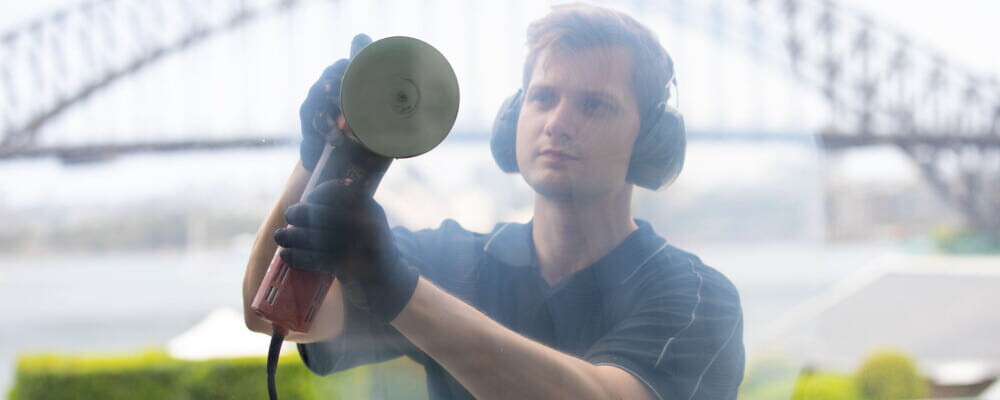


Understanding the different glass types

What are the different types of glass?
Float Glass
This is how it all starts. Nearly all flat glass in use nowadays starts as a hot, molten liquid floating (hence the name) on top of a bed of liquid tin. When it cools and becomes solid it can be further processed and enhanced. Much of it, however, still reaches us and is installed as plain standard float glass
Float glass is quite inexpensive but it cracks and breaks easily.
It is usually between 3mm and 6mm thick. Float glass is used for standard windows, mirrors, picture frames etc, or in any situation where breakage is not a great risk
We do polish float glass in certain situations, but due to the risk of breakage, a straight out replacement is often recommended.
Laminated Glass
When two thin sheets of float glass are glued together it is called laminated. Why glue the sheets together? In a word to make it safer. If it gets damaged, one or both of the glass sheets may crack, but they will not break and the glass will not shatter.
Laminated glass is more expensive than float glass. It is also called safety glass. It is often identified by a sticker at the bottom of the panel as such
Standard thicknesses are 6.38mm and 10.38mm. It is used wherever there is a risk of injury such as door panels, shop windows and windscreens. For specialized applications such as high traffic areas, greater thicknesses with solid interlayers are available.
Polishing laminated glass, especially 10.38mm, is a definite option as it will more often than not represent a substantial cost-saving.
Toughened Glass
Like its laminated cousin, toughened glass starts its life as float glass, but is then re-heated and shock-cooled. That creates a so-called "compression layer" on both sides of the panel which prevents cracking and most breakages. However, on severe impact, toughened glass shatters into many small pieces. Once toughened, it cannot be cut, drilled or processed in other ways. It is also called tempered glass.
Toughened glass is certainly more expensive than float or even laminated, but the extra cost is often justified due to the fact that it is much safer. One problem with this type of glass is that it can get scratched easily. In most cases it is identified by a permanent stamp (not a sticker) at the bottom of the panel
All thicknesses of glass can be put through the toughening process. Toughened glass is used in bathrooms, swimming pools and public buildings, on balustrades, glass fences, car side windows and in many other applications.
Toughened glass is ideal for glass polishing. Removing scratches from such a glass is much cheaper than replacing the panel.
Other Types of Glass
The above three basic types of glass can be further processed for special requirements. Some examples are:
Double Glazing (DGUs) - two sheets of glass held together with a void in between. They sheets can be any of the 3 types above
Low-e Glass - has an ultra-thin metal coating on one side to give it better thermal properties
Heat-strengthened Glass - similar to toughened, widely used in high-rise buildings
Low Iron glass - a special formulation that eliminates the green tinge in glass
